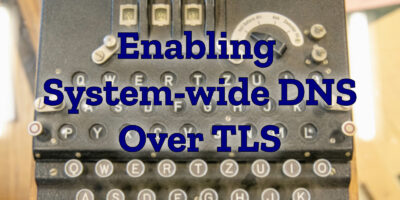Did you miss the Fedora Linux 40 Release Party? Don’t worry, we’ve got you covered! This post is your one-stop shop for catching up on all the amazing developments since the big release. From shiny new features to downstream updates and hardware collaborations, Fedora Linux 40 is packed with goodies.
Fedora Linux 40 has landed, packed with a treasure trove of updates catering to desktop enthusiasts and enterprise users. Whether you’re drawn to the sleek new GNOME 46 experience in Fedora Workstation, the cutting-edge KDE Plasma 6 in Fedora KDE Spin, or the expanded range of Fedora Atomic Desktops, there’s something for everyone. This release marks Fedora’s foray into the AI/ML developer experience with PyTorch packaged for the first time and ROCm 6 support for AMD hardware, while also delivering numerous under-the-hood improvements for enhanced performance and security. Dive deeper into the sections below to discover all the exciting changes and innovations that Fedora Linux 40 brings.
Unpacking the Core Updates and Downstream Developments!
Fedora Workstation
Fedora Workstation 40 elevates your productivity with a revamped Files app, streamlined Settings, smoother app experiences, and a fresh look for everyday apps. Dive into Fedora Linux 40 to see the difference!
Fedora KDE
Fedora KDE 40 is here, packed with exciting updates that make it the perfect time to explore this customizable and personalized Fedora Linux experience. I bet you are curious to know more, so check out What’s New in Fedora KDE 40 article!
Fedora Atomic Desktops
Fedora 40 brings significant enhancements to its Atomic Desktop family. Silverblue now boasts GNOME 46 and faster updates, learn more on Fedora Magazine. Fedora Kinoite has embraced KDE Plasma 6 and a Wayland-only environment, complete with pre-installed KDE apps and even more available on Flathub. Check out the details in the “What’s New in Fedora KDE 40?” article.
Meanwhile, Fedora Sway Atomic (formerly Sericea) has been upgraded with wlroots 0.17, improving performance and adding new features. If you are interested in getting detailed information, head over to the Sway release page.
Finally, Fedora Budgie Atomic (formerly Onyx) features the latest Budgie Desktop 10.9 with Wayland support and various improvements. Explore the Buddies of Budgie blog for more details!
The evolution of Fedora’s Atomic Desktops doesn’t stop there. Fedora Linux 40 also introduces Fedora Bootable Containers, a next-generation initiative that simplifies the creation and management of custom image-based Fedora Linux systems.
Fedora Bootable Containers
The Fedora Bootable Containers simplifies building custom Fedora images using familiar container tools. Key improvements include native OCI/Docker container support, the new bootc tool for streamlined building, enhanced infrastructure for managing Linux systems, and two new Fedora IoT image options for users.
To learn more about how bootable containers are revolutionizing image-based systems in Fedora, head over to the Fedora bootable containers article.
Fedora Asahi Remix 40
Fedora Asahi Remix 40 delivers Fedora Linux 40’s goodness to Apple Silicon Macs, featuring OpenGL 4.6 support for smoother graphics, KDE Plasma 6 as the default desktop, a custom setup wizard, and multiple variants to suit your needs. Dive into the world of Fedora on your Apple Silicon Mac with Fedora Asahi Remix 40!
Downstream Updates: Expanding Fedora’s Reach
Fedora Linux 40 is just the beginning! Beyond the core updates, a thriving ecosystem of downstream projects and innovative hardware partnerships are expanding Fedora’s possibilities. Get ready to discover how projects like Universal Blue and Ultramarine are pushing boundaries, and how hardware vendors like Slimbook and Framework are bringing Fedora Linux to life on cutting-edge devices.
Universal Blue Images Being of Fedora Linux 40
Universal Blue is a community-driven project focused on crafting a range of Fedora Linux based operating systems, each tailored for a distinct purpose. Their foundation is uBlue, a flexible and user-friendly distribution aimed at both beginners and experienced users. Let’s take a closer look at the latest updates to uBlue and its specialized counterparts:
- uBlue: The flagship uBlue distribution has reached General Availability (GA), providing a stable and customizable base for various user needs.
- Bluefin: This GA release streamlines containerized development with an Ubuntu-like GNOME layout and productivity-boosting extensions.
- Aurora: This KDE-flavored version of Bluefin caters to users who prefer a more customizable desktop environment.
- Bazzite 3.0: A significant upgrade for Linux gaming, this release brings Fedora Linux 40, KDE Plasma 6, or GNOME 46 options, enhanced hardware support, and optimized performance to the world of handheld and desktop gaming.
BlueBuild
- BlueBuild, a standalone project born from Universal Blue, empowers you to create custom Fedora images with ease. Its recipe-based system and modular design make customization a breeze, while the enhanced build system and upcoming keyless signing offer even more flexibility. With a fresh look, streamlined template, and a new Rust-based CLI, BlueBuild is the perfect tool for crafting your ideal Fedora experience. Reading more in this article sure puts things in clearer perspective!
Ultramarine 40
- Ultramarine 40, codenamed “Lost Umbrella,” brings exciting new features to this community-driven Fedora Linux remix, including a lightweight Xfce edition for lower-powered devices, expanded support for Chromebooks and Raspberry Pi through the Ultramarine Anywhere initiative, and improved download speeds with new mirrors. Dive into Ultramarine 40 and explore its expanded horizons!
CentOS Stream 10 & RHEL 10
- Fedora Linux 40 is the foundation for the next generation of enterprise Linux, bringing innovation, stability, enhanced security, and new features to CentOS Stream 10 and Red Hat Enterprise Linux (RHEL) 10. It’s a major step forward for the enterprise Linux ecosystem, offering a reliable and secure platform for mission-critical workloads.
Fedora Linux on your Devices: New Hardware, New Possibilities
Fedora Linux 40 isn’t just about software, it’s also enhancing the hardware experience. Let’s explore some exciting developments in that area.
Slimbook Fedora 2 laptops have arrived, featuring a sleek new black magnesium chassis option, a choice of keyboard layouts (including US ANSI), and a significant performance boost with Intel’s 13th Gen i7 processor. The 16-inch model even offers an Nvidia RTX 4000 series GPU for demanding tasks. These laptops come preloaded with Fedora Workstation 40, boasting GNOME 46 and the latest Nouveau drivers. Slimbook continues its commitment to open source by donating 3% of proceeds to the GNOME Foundation and offering exclusive discounts to Fedora contributors.
Fedora contributors can enjoy an exclusive discount, and everyone can save €150 on the previous model.
Bluefin & Bazzite: Tailor-Made for your Framework Laptop
Fedora Linux 40 is breaking new ground in hardware compatibility, and the Universal Blue team is amplifying that momentum by bringing their acclaimed Fedora Linux based distributions, Bluefin and Bazzite, to Framework 13 and 16 laptops with official community support. These tailored distros offer seamless dGPU switching on FW16 models, automatic power profile switching, fractional scaling, fingerprint reader support, and even VRR (for Bazzite users on FW16). Additionally, you can easily share your Steam Deck MicroSD card with your Framework laptop and unlock LUKS encryption with your fingerprint. Dive into the details of this awesome collaboration on the Universal Blue forum!
That’s a wrap on our whirlwind tour of Fedora Linux 40! From software enhancements to downstream projects, and hardware collaborations. Fedora is pushing boundaries and expanding its reach.
Whether you’re a developer, gamer, or simply a fan of open source, there’s something in Fedora Linux 40 for you. So, what are you waiting for? Dive in, explore, and get involved with this thriving community.






Ray
Should read gnome 46
Neil Darlow
Fedora 40 features GNOME 46 not 44 as mentioned in the article.
Richard England
The GNOME version listed in the article has been corrected. Thank you for the alert.
magic
Fedora 40 The worst Fedora release ever! There are so many mistakes here that it’s easier to list the few things that work, because most of them don’t!
You might think that this release is a saboteur!
I will go back to Fedor 39 for the second time, I thought that the mistakes of youth had already been corrected, but it is even worse! Unfortunately, I updated it on three laptops at once! I’m skipping this release and waiting for fedora version 41 (maybe you’ll get rid of the saboteur by then!)
venicones
So you’ve encountered major issues for you. Have you reported them? Have you asked for assistance with them here? https://discussion.fedoraproject.org/c/ask
All you have said is “I got issues” which will not allow anyone to even make suggestions.
axil
what issues?
Christophe
Nothing work,
Blender (from fedora) have problem with opengl,
Blender (Official) crash evrey 5 minutes,
Nvidia driver almost impossible to install
Freecad can not start because of libdrm_amdgpu
Bluefish lost javascript colorisation
MessageTray (js gnome shell extension) crash
i am on fedora since the bigining, but this drop is to much.
how can you do that, we are not playing with ours computer,
this is just a waste of time
venicones
Comments on articles are unlikely to generate as much, if any, interest in your problems.
Have opeed a bug report on any of them? Have you asked for any help in Ask Fedora [ https://discussion.fedoraproject.org/c/ask ]?
It is unlikely that developers will encounter your comments on an article but the recommendations above might generate some responses.
RG
Good overview of f40 features. Make another one for next versions too. Unlock luks encryption with fingerprint – now I need to go and try this.